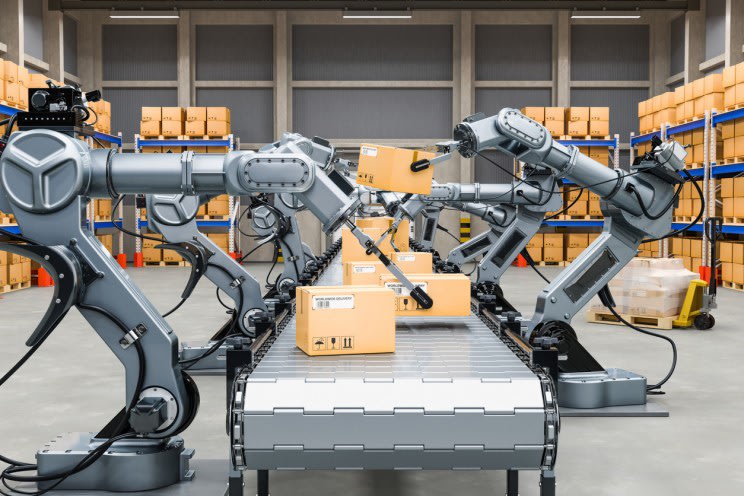
6 Process Excellence trends to watch out for in 2020
New technologies like artificial intelligence and machine learning are changing the way work gets done all over the world. We believe that 2020 is the year that companies will embrace these powerful technologies and apply them to revolutionize their business processes.
Here's how process-minded leaders can capture the opportunity.
1. Moving from basic Process Discovery to AI-enhanced Processes

In the past few years, Process Mining grew faster than any other technology in the BPM and process excellence space — even faster than RPA, according to the International Data Corporation, IDC. In 2020, the rapid growth will continue. Internationally recognized process mining expert Professor Wil van der Aalst and Gartner predict that Process Mining will move beyond process discovery.
While it’s still an important part of the analysis, the focus shifts beyond the visualization of processes towards more in-depth optimization measures such as conformance checking and AI-based process enhancement.
My advice: Don’t focus only on process insights, focus on how to act on them. With the Celonis Action Engine, we have developed an AI-powered process assistant that can turn process insights into real-time, automated actions. Fed by real-time data, the Action Engine sends signals to teams like Customer Service, Purchasing or Accounting, helping them drive better outcomes — like resolving tickets faster, boosting customer satisfaction, and improving on-time delivery.
2. Robotic Process Automation (yes, still)

2019 was a bumpy year for Robotic Process Automation (RPA). Even though we've seen a boom of implementation in the market, many business leaders have realized by now that RPA is not the silver bullet to achieve Process Excellence. The ugly truth about RPA adoption is that we’ve simply succeeded in moving data around enterprises faster with less manual intervention. But we haven’t created better business outcomes.
Because what the technology fundamentally lacks is a holistic view of processes. While it's a useful tool to automate specific manual tasks, its end goal is automation for its own sake, rather than to optimize for business outcomes. Used in isolation, it can actually hamper your processes, rather than improve them. In fact, 30-50% of RPA initiatives fail. “It is clear that the first act in the 'robotics evolution’ has not been a slam dunk for many,” note Alex Edlich and Vik Sohoni, both senior partners at McKinsey.
That being said, RPA won’t just disappear in 2020. But it’s time to recognize that the technology is just a small piece of a much bigger picture.
My advice: Rather than thinking about RPA as a first step, start by investing in tools that help you understand and improve your processes on every level. Based on those insights, set your goals for process improvement — like increasing productivity, reducing rework costs, or improving on-time delivery.
Check out our article What is RPA to learn more.
3. Task Mining (Don’t forget the people behind your process)

When we’re talking about achieving Process Excellence, we also have to look at the people who are driving those processes.While RPA has focused on automating tasks in processes, first Process Mining vendors have realized that we need context around the data to improve processes.
Why is context important? Because it’s the staff’s activities within a process that can drive outcomes. That’s why we introduced Task Mining.
The functionality will have a huge impact on Process Excellence initiatives in 2020, because it enables a complete view of how work is done inside an organization. Just like our purchase behavior indicates what we may want next on an e-commerce platform like Amazon, our process behavior sheds light on how we can do our work better and more efficiently.
My advice: Don’t forget the people behind your processes. 2020 is the year of Task Mining, companies will start initial projects to reinforce their understanding of their processes, seizing the opportunity to enhance desktop behaviors to optimize process outcomes like on-time delivery, and analyze and enhance user tasks to improve productivity.
4. Think outside the box

The 2019 Gartner Market Guide for Process Mining predicts the process mining market to grow at least triple in size over the next two years. And that will lead to the next big development in Process Mining: diversification.
Order-to-Cash and Purchase-to-Pay have been the most common and widely popular processes where companies employ Process Mining so far, but there are so many more possible use cases.
Innovators in Customer Service, IT, Transport, or Supply Chain, are exploring exciting new use cases that are customized to their needs and targeted business outcomes. Uber drives stellar customer service on a global scale with Process Mining, Schukat streamlines Warehouse Management to make same-day deliveries run like clockwork. Imagine, you could use Process Mining to free Working Capital, speed up your Ticket Resolution, reach Perfect PO’s, … The possibilities are endless!
My advice: Speed time to your targeted business outcomes with Process Mining solutions that are customized to your needs. For 2020, Celonis will focus on giving you the right tools to that. We are building Performance Accelerators — pre-built applications that bundle Machine Learning Models, Action Engine Skills, and Workflows — with which organizations can boost the implementation of Process Mining across departments and processes.
5. Sustainability meets Process Excellence

Climate Change is the biggest challenge of our generation. And it’s ours to solve. The inspirational speech of former US Vice President Al Gore at our Superfluid World Tour event in San Francisco hit a raw nerve. Every business leader and every company has a responsibility to contribute to a more sustainable future.
My advice: Prioritizing growth over sustained success isn’t a trade-off companies need to make. In fact, it's an imperative to achieve both.
Celonis’ transformational Process Mining technology has the power to leave a lasting impact by helping companies identify areas to reduce waste and use resources more efficiently.
The companies we’ve helped have identified where they can make their business more effective in reducing waste in many forms. This can be reducing excess stock in warehouses, taking waste out of delivery routes or manufacturing processes to decrease CO2 emissions.
6. Productivity is more than just working faster

It’s a worldwide problem: economic productivity should be rising, but it’s not. The amount that is produced for every hour of work is barely increasing, in some countries (like the UK) it’s even falling. The OECD, the intergovernmental organization representing 36 of the top world economies, forecasts the lowest GDP growth since the 2008-9 recession, around 3%.
Companies need a pick-up in productivity. The question is: how?
My advice: Work smarter, not harder. With Process Mining, companies can have the data at hand to know what they should be working on with high priority.
With Process Mining finding the right opportunities for process automation, people spend less time on repetitive, easy tasks. What’s even more important, with the help of AI-based recommendations, employees finally see at a glance on what to focus on to improve the outcome of a process. That resolves not only in freeing up time for employees to do what brings in real value, it means using your resources the optimal way.
Take the Purchase-to-Pay process for example. With Process Mining by Celonis, your organization can identify manual steps and re-work that extend the cycle time. See what causes specific suppliers, products or divisions to delay shipments. Now it’s time to act on your insights. Automate manual steps, reduce maverick buying and empower procurement associates with real-time alerts to avert late deliveries or re-worked invoices.
That is what working smarter can look like.
These are our process predictions for the year to come — what do you think? Let us know what you think the biggest trends are on Twitter or LinkedIn.





